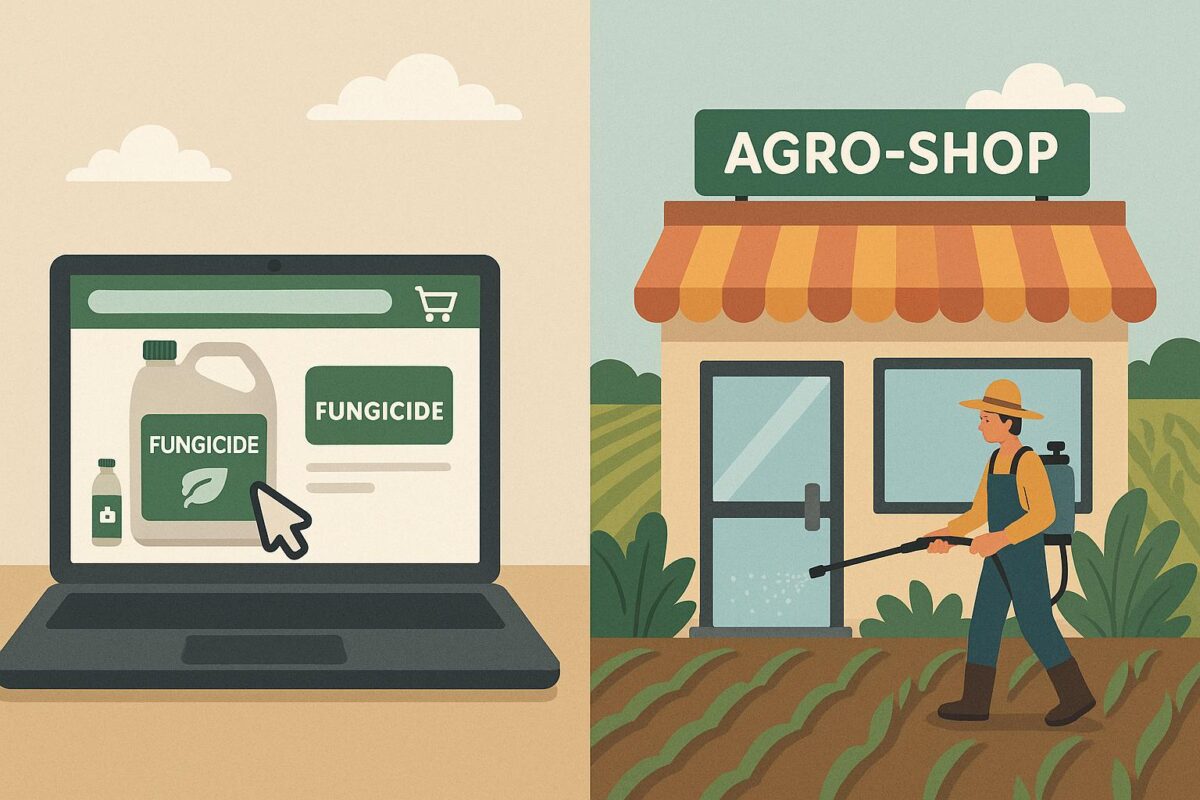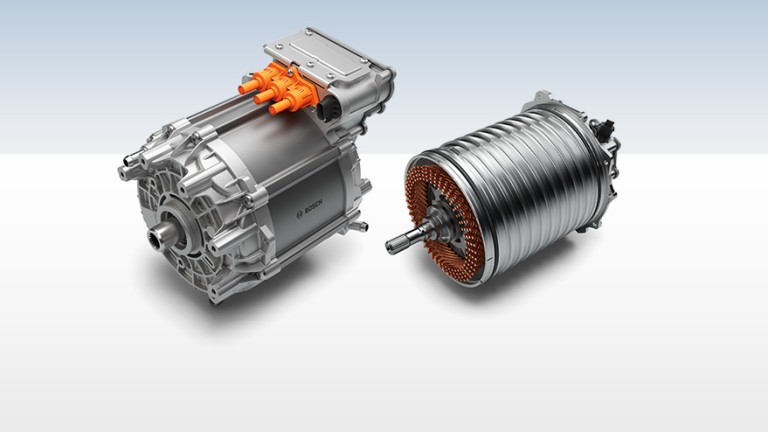Online vs Local Agro-Shops: Where Should Farmers Buy Fungicides?

Farmers in India must make judgements outside of the fields as the country’s agriculture transitions to a digital age. One significant change is how they buy agricultural inputs, especially fungicides, which are essential for avoiding rust, blight, mildew, and wilts. The quality and timing of fungicide application due to fluctuating climates and rising crop values can determine a season’s profitability or loss.
Crop protection goods were previously only available from nearby agro-shops. However, the popularity of purchasing fungicides online has grown with the development of e-commerce and agri-tech platforms. Farmers frequently question whether they should continue working with reliable local vendors or look into internet choices in search of better value, convenience, and diversity.
This blog explores both sides in depth, offering a practical comparison that can help every farmer, small or large, decide the best way to source quality fungicides in 2025 and beyond.
Why Fungicides Matter in Every Farm Budget
Fungal diseases are notorious for their rapid spread and quiet devastation. By the time they are visible, up to 30% of the crop can already be compromised. Due to the subtropical climate, Indian crops like paddy, wheat, tomato, grape, and onion are highly susceptible to various fungal strains.
Early and accurate treatment requires:
- Quick access to the right fungicide for the right disease
- Verified products with clear instructions for dosage and timing
These factors can make or break a harvest, and the availability of fungicides, either through local agro-shops or online marketplaces, is critical.
Buying from Local Agro-Shops: The Traditional Route
For decades, Indian farmers have relied on agro-dealers in their villages or nearby towns. These shops are often part of the community and have established trust over generations.
Advantages include:
- Immediate availability: Farmers can inspect and take the product on the spot
- Verbal guidance: Dealers offer on-the-spot advice and may suggest alternatives
- Relationship-based trust: Long-term credit, loyalty discounts, and familiarity
However, there are growing challenges:
- Limited brand and product range
- Risk of outdated or counterfeit stock in some areas
- Inconsistent pricing due to a lack of MRP transparency
- Verbal-only instructions with no documentation
As agriculture becomes more knowledge-driven, this traditional method can sometimes fall short in precision and variety.
Buying Fungicides Online: A Digital Advantage?
E-commerce in agriculture has gained momentum, especially after the pandemic. Farmers across India are turning to digital platforms that offer access to a wide range of certified fungicides.
Here’s why online buying is gaining ground:
- Wider product selection: Multiple brands, bio-fungicides, and international options
- Access to verified reviews and usage guides
- Transparent pricing with doorstep delivery—even in remote villages
- Digital recordkeeping and repeat order convenience
For example, farmers can now easily buy fungicide products tailored to their crops and seasons without visiting multiple shops or facing limited availability during peak disease cycles.
The true benefit is comparing items in one location by active component, FRAC code, dosage, and crop suitability.
Comparing Cost: Is Online Cheaper?
One of the most common beliefs is that local shops offer better rates due to negotiations. While this may be true for certain generics, online platforms often provide better overall value due to:
- Bulk offers and seasonal discounts
- Lower logistic overhead per unit
- Access to registered products directly from manufacturers
More importantly, online buyers can calculate cost per acre, not just per packet, ensuring smart budgeting and informed choices.
According to a study by the National Bank for Agriculture and Rural Development (NABARD), smallholder farmers using agri-ecommerce reported up to 18% savings on average input costs per season compared to offline-only sourcing.
Customer Support: Face-to-Face vs Click-to-Call
Local dealers provide hands-on help. They often know the area’s common fungal threats and can recommend quick solutions. However, this advice is usually experience-based rather than science-backed.
Online platforms are catching up with:
- Toll-free helplines
- Agronomist live chat
- Video tutorials and multilingual guides
While local shops offer personal service, online platforms provide standardised, data-backed support, especially for newer or lesser-known fungal issues.
Authenticity and Safety of Products
Counterfeit agrochemicals are a serious concern. Some reports suggest that up to 25% of plant protection products in India may be substandard or fake. These products don’t just waste money—they harm crops and soil.
Due to poor inventory control, local shops may unintentionally stock expired or unverified fungicides. Online platforms, by contrast, usually offer:
- Verified sellers and traceable packaging
- Batch numbers and MRP visibility
- Return policies for damaged or suspicious goods
For farmers managing export crops or certification programmes, documented proof of fungicide authenticity is vital, making online sources more compliant with such needs.
Regional Access: The Ground Reality
Access to quality fungicides is often delayed or limited in rural and remote areas. Seasonal shortages, transportation issues, and monopoly pricing are common.
Online platforms bridge this gap by delivering to over 15,000 pin codes, often within 2–5 working days. This has empowered farmers in places like Bundelkhand, Vidarbha, and coastal Odisha to access the same products as their counterparts in Punjab or Maharashtra.
Additionally, many online agri-marketplaces are building phygital (physical + digital) networks—linking offline centres with online inventory for faster turnaround.
“Smart farming begins with smart buying—not just saving money, but saving your crop at the right time, with the right tools.”
Case Study: Grape Grower in Nashik
In the past, Raghunath Patil, a grape grower in Nashik, relied solely on his neighbourhood agro-dealer. However, downy mildew attacked his vines during the pre-harvest phase of 2023. There were no other suggestions, and the local dealer’s inventory was small.
Patil used an internet agri-portal to find a systemic fungicide with protective and curative properties. The medicine arrived in two days and included a multilingual video on dosage and rainfast timing. He credited prompt treatment for the 12% rise in Grade A bunches he saw that season.
His takeaway? “The shop is nearby, but the solution was online.”
Which Channel Supports Organic and Sustainable Options?
Farmers transitioning to organic or low-residue farming often find limited options at local shops prioritising high-volume chemical products.
Online portals now stock a growing range of:
- Bio-fungicides like Trichoderma, Bacillus subtilis, and neem-based sprays
- Certification-ready organic fungicides for export crops
- Integrated Pest Management kits
Online access to such inputs is a game-changer for those looking to blend tradition with science.
Can Farmers Use Both Channels Together?
Absolutely. Many successful farmers adopt a hybrid approach:
- Buy emergency or urgent products from local shops
- Stock preventive and premium products online in advance
- Use both sources based on season, price, and availability
For example, a vegetable grower may source a curative fungicide locally when disease pressure spikes, ordering bulk copper oxychloride or bio-fungicides online at off-season discounts.
This dual strategy maximises flexibility and ensures farmers aren’t locked into one system.
Future Trends: Where Is Input Buying Headed?
As India pushes for smart farming, traceable produce, and digital literacy, input buying will become more platform-centric. Expect to see:
- More mobile-based ordering systems
- Real-time disease alerts linked to buying suggestions
- Subscription models for recurring purchases
- Drone-compatible fungicide formulations with delivery bundles
These innovations will blend online convenience with on-ground applicability, creating a new standard in agricultural input supply.
Alternative Closing: The Best Store Is the One That Knows Your Crop
The debate between local and online buying isn’t about loyalty but logic. Innovative farmers don’t choose sides; they choose strategies. Whether from the shop next door or a screen two states away, the best fungicide is the one that protects your crop at the right time, in the correct dose, with real results.
In today’s connected world, the wise farmer asks not just, “Where is it cheapest?” but “Where is it smartest?” Because protection isn’t just a product—it’s a plan.
Frequently Asked Questions
-
Are online fungicides safe to use?
Yes, when bought from verified platforms. Always check for certified brands, manufacturing dates, and usage instructions.
-
Is buying online better for large or small farms?
Both can benefit. Smallholders enjoy variety and support, while large farms get bulk pricing, repeat order management, and delivery tracking.
-
How can I ensure online fungicides are genuine?
Look for batch numbers, seller reviews, and return policies. Trusted sites also list certifications and safety documentation.
-
Can I ask for help online like I do at my local dealer?
Most good platforms offer expert chats, helplines, and tutorials. Some also connect you to agronomists for crop-specific advice.
-
Which is cheaper, online or offline?
It depends on the product and location. Online offers discounts and bulk rates, while local may offer small-time negotiation. Comparing total usage cost is the most innovative approach.
Check out more blogs: Are Hybrid Cotton Seeds Environmentally Friendly?










